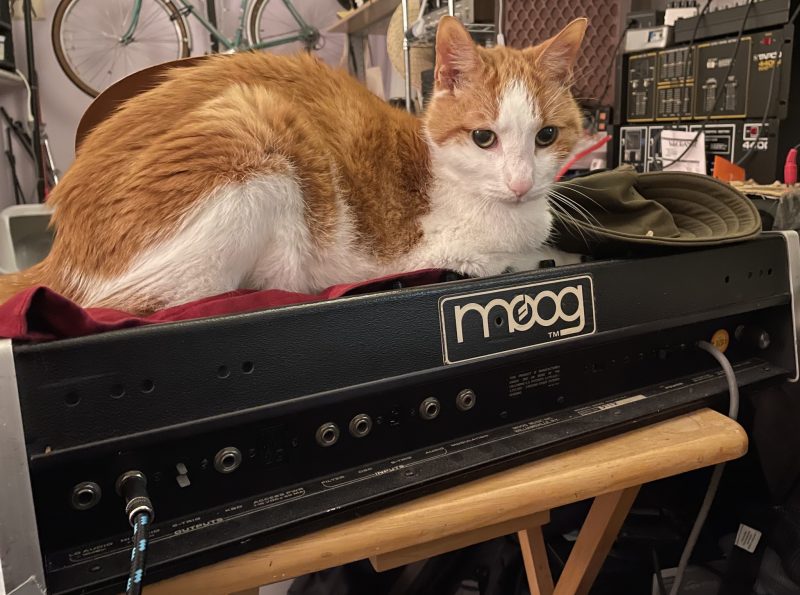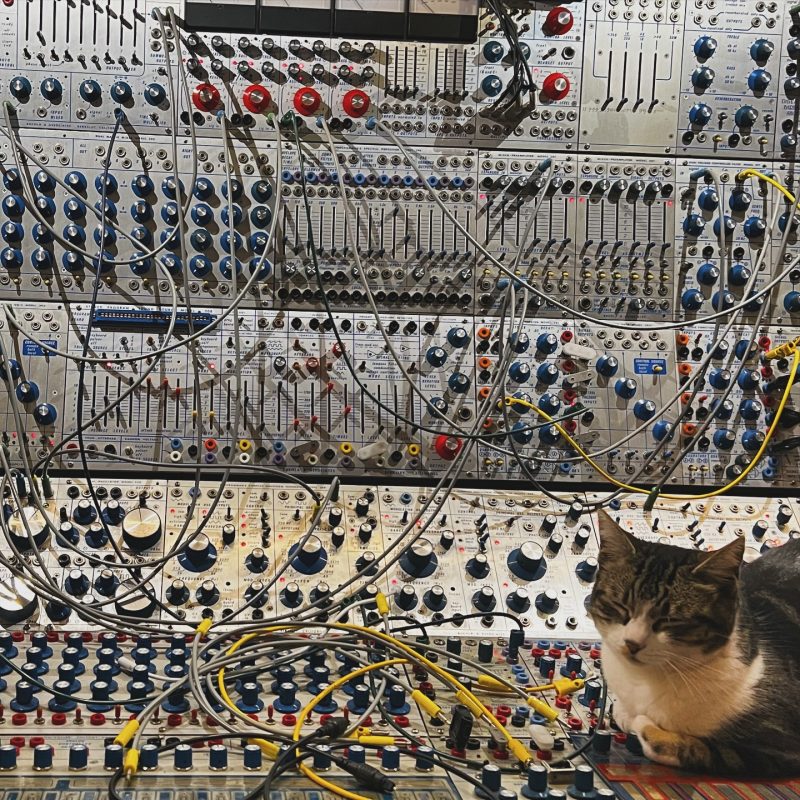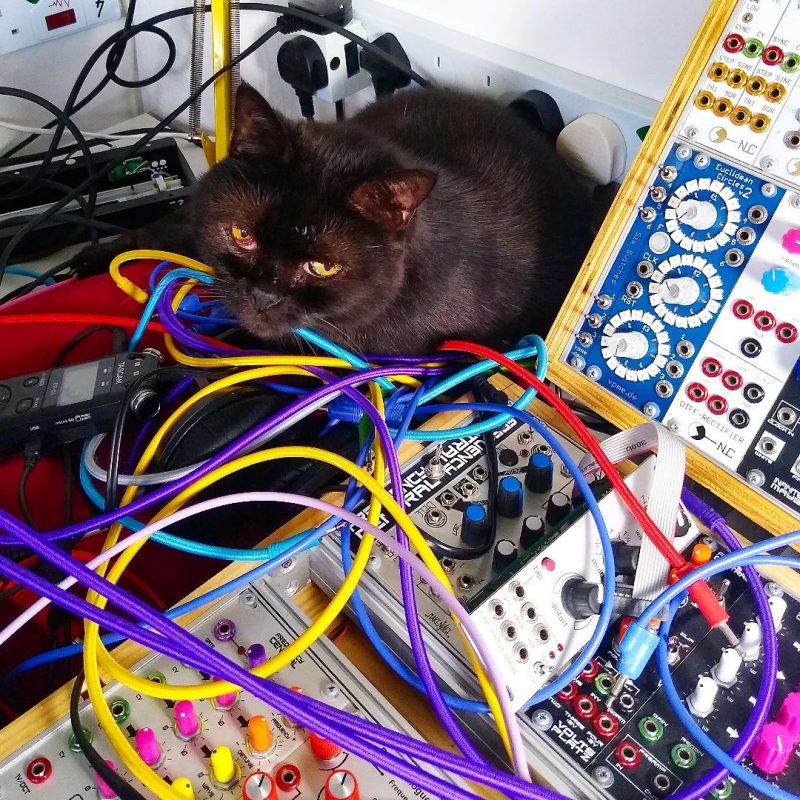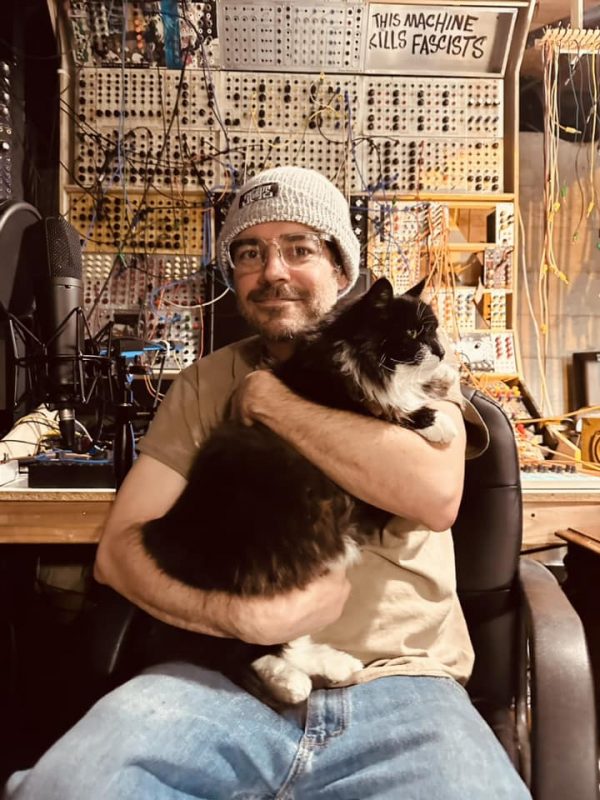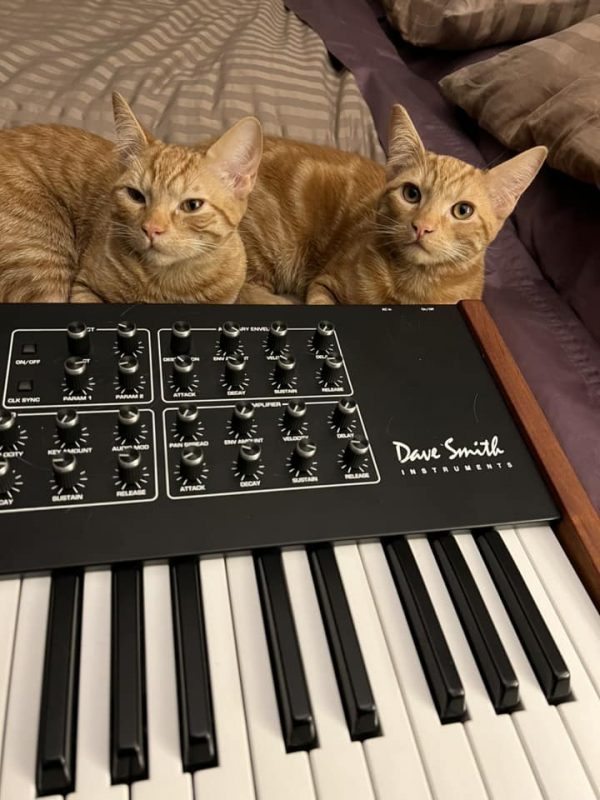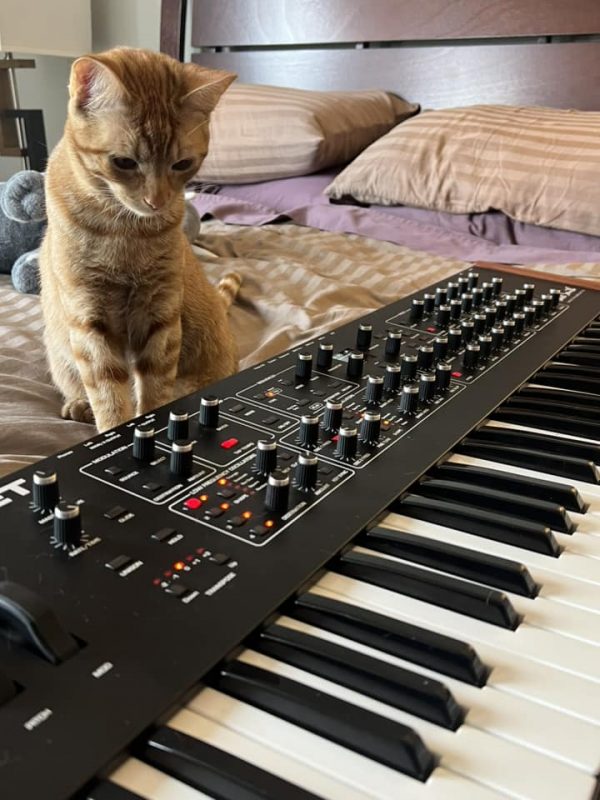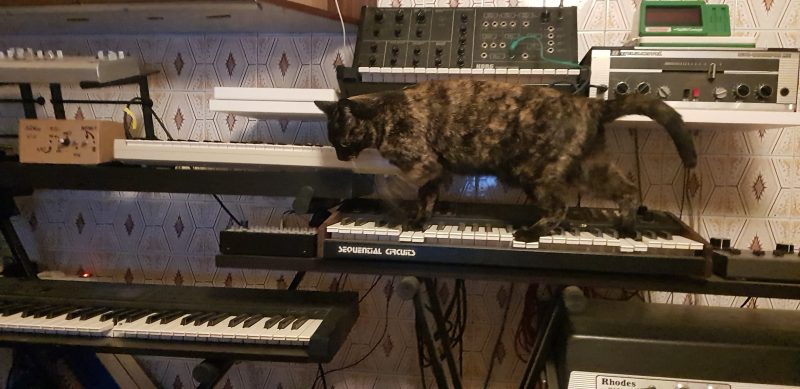
Rubia sits atop a vintage Sequential Six-Trak synthesizer and looks ready to pounce on the Casio VZ-1 (to the left). Above her, we see a Korg MS-10 analog synthesizer and in the lower right corner a vintage Rhodes.
From AxWax via Mastodon. AxWax and Rubia also have a new sample pack out featuring samples from a 40-year old Casiotone MT-70 keyboard. We at CatSynth look forward to checking that out.

